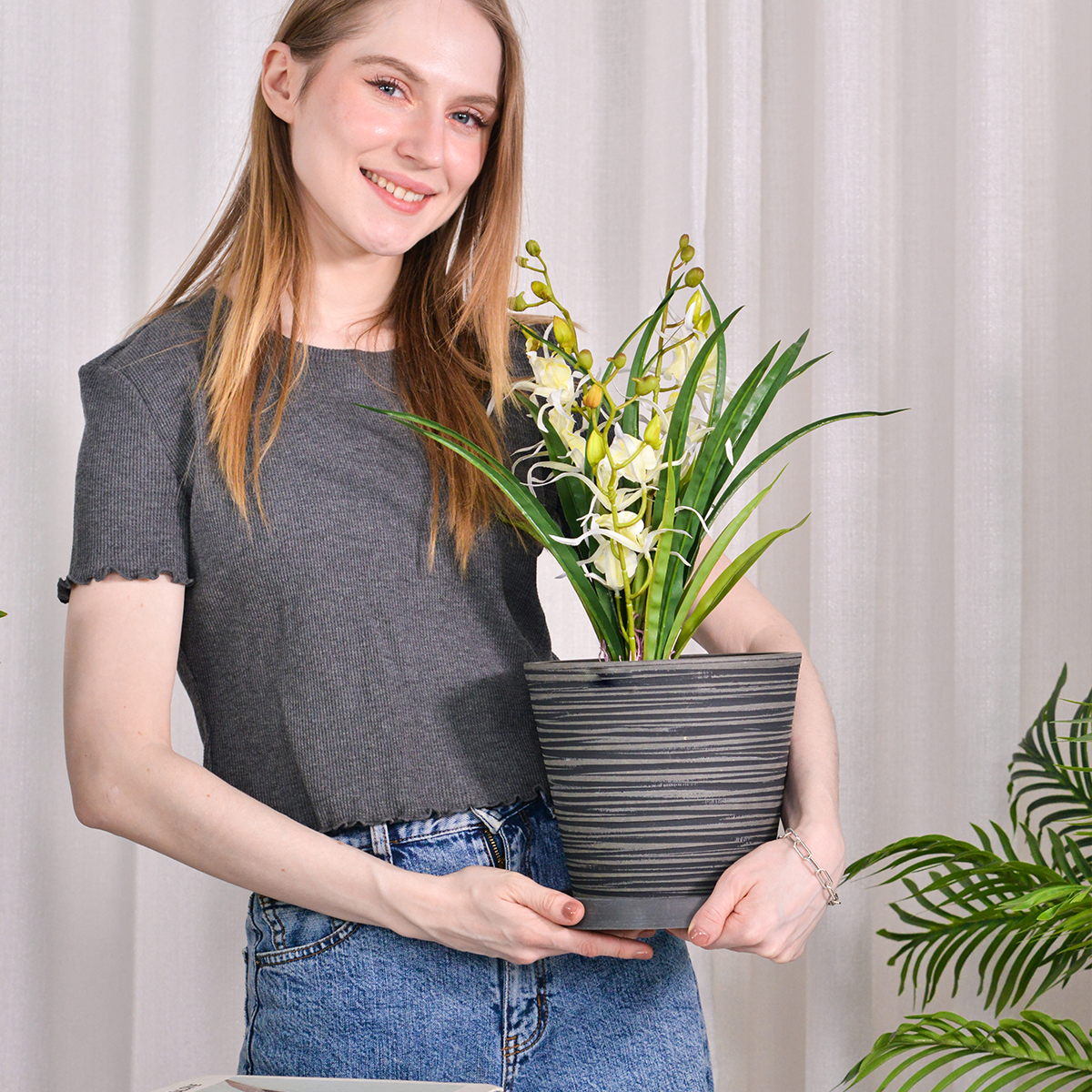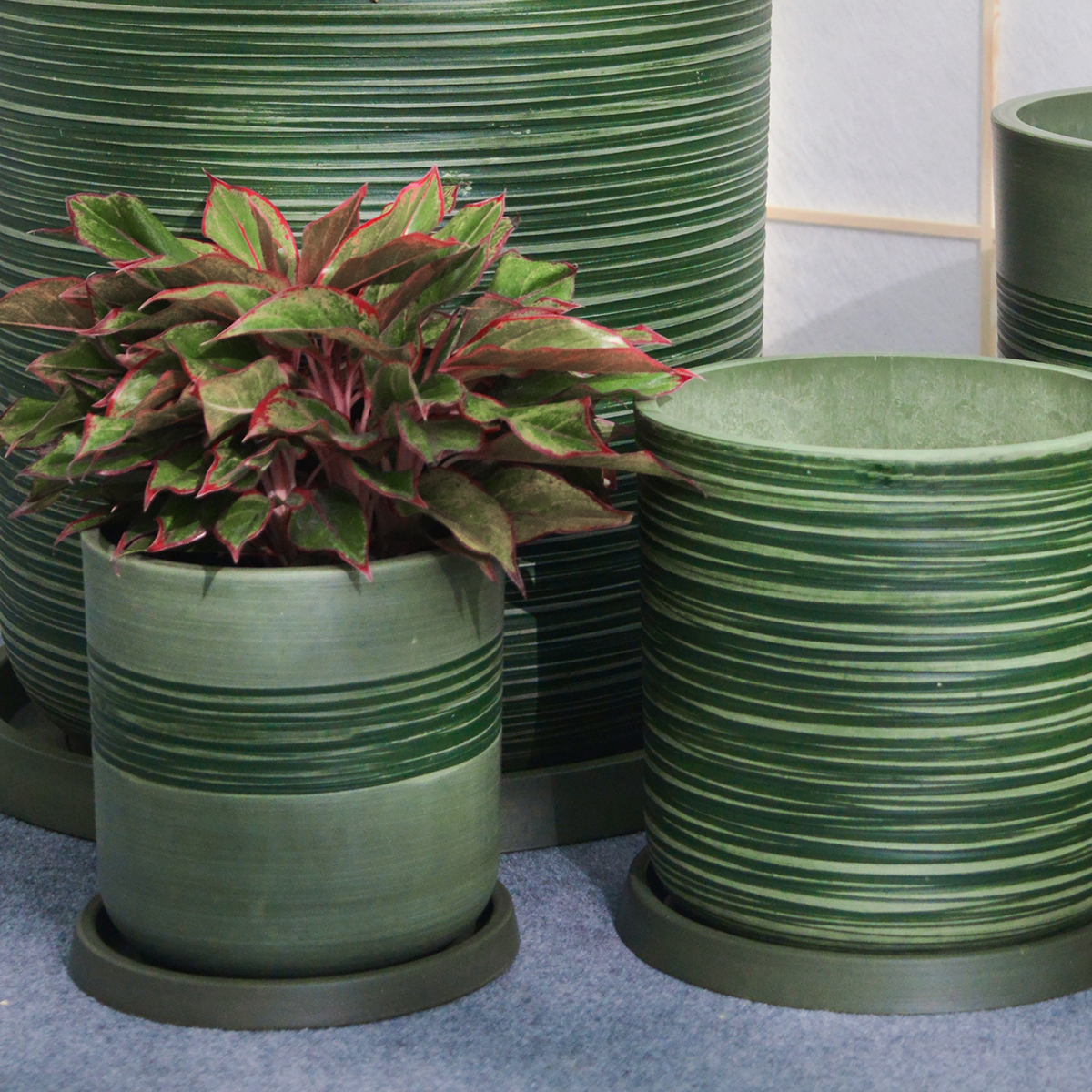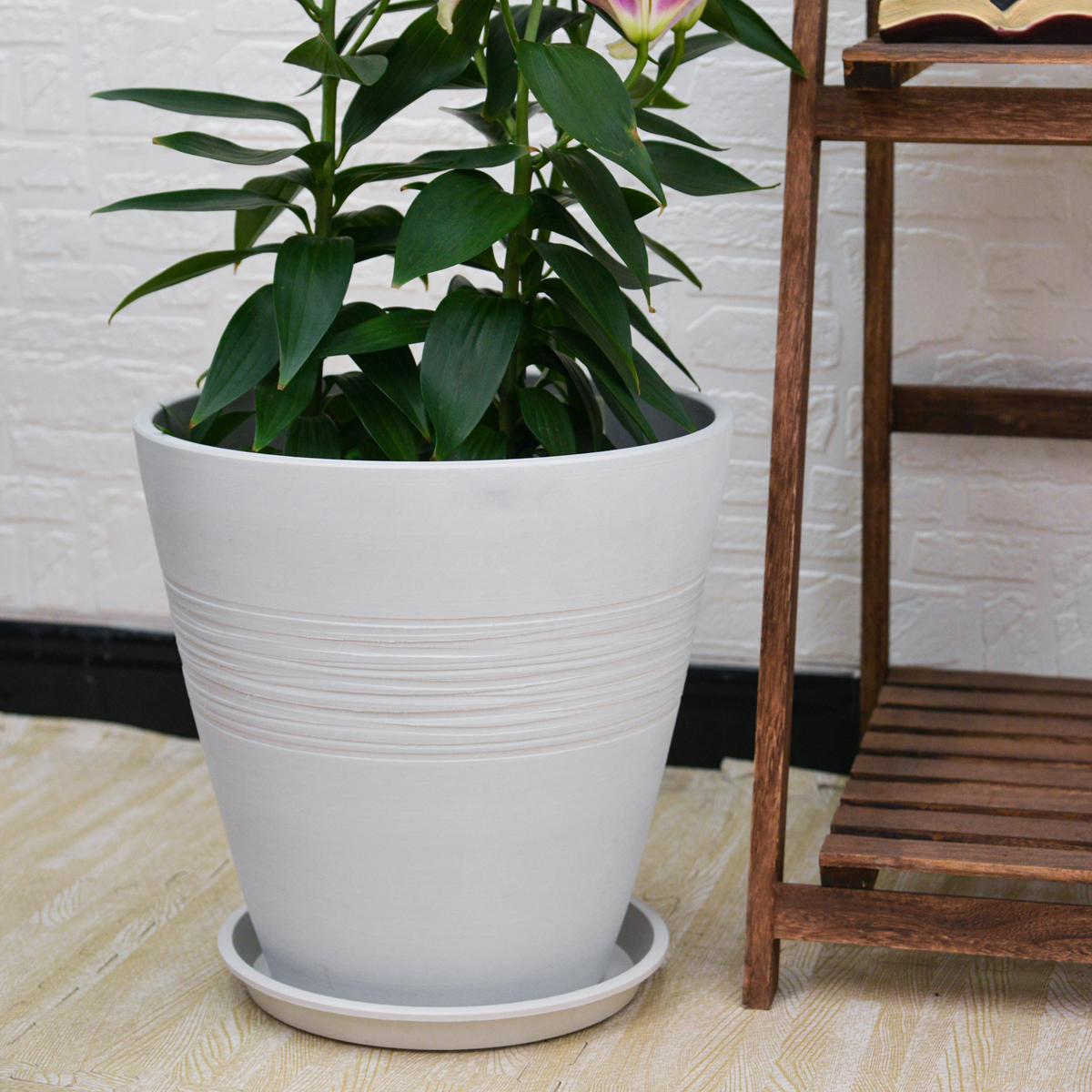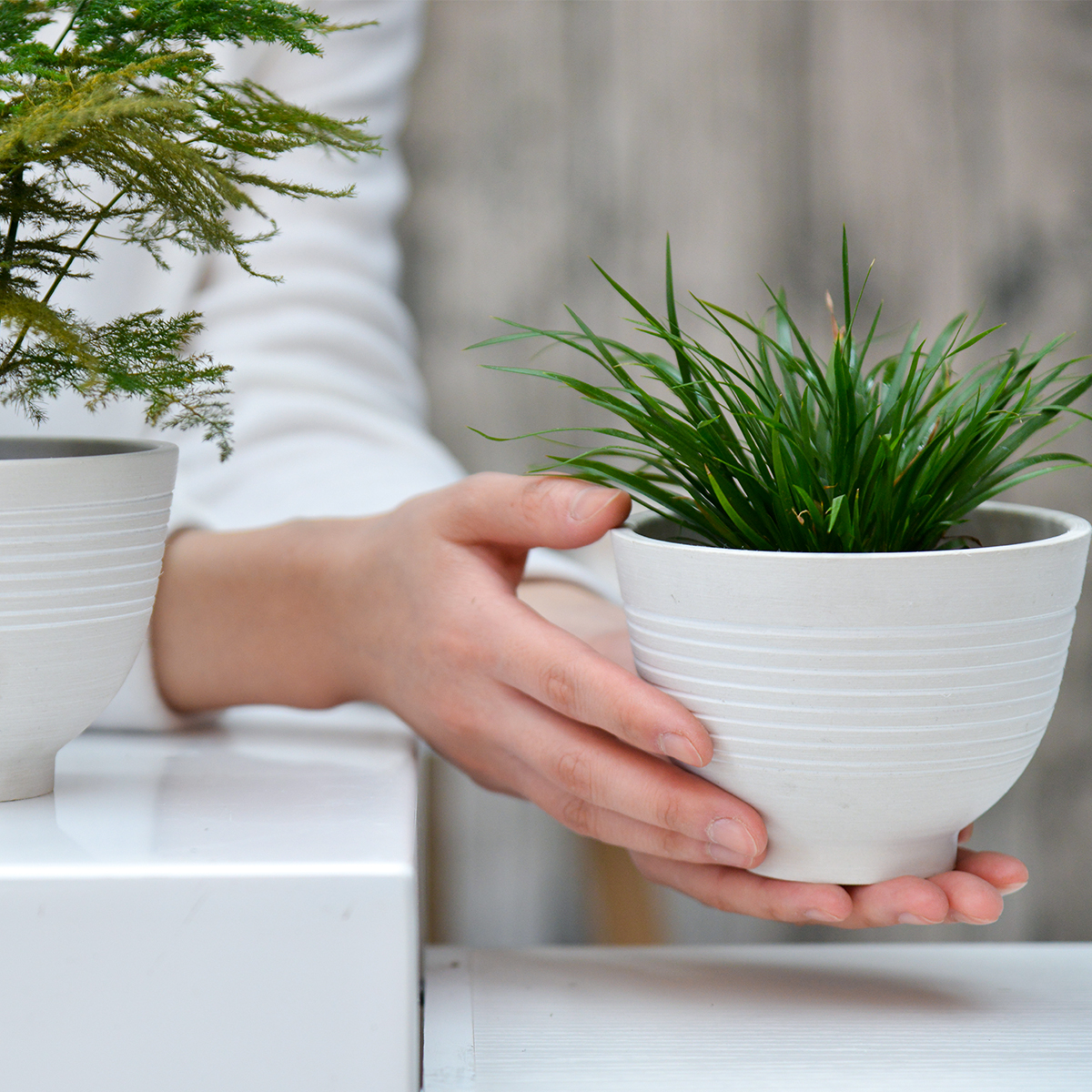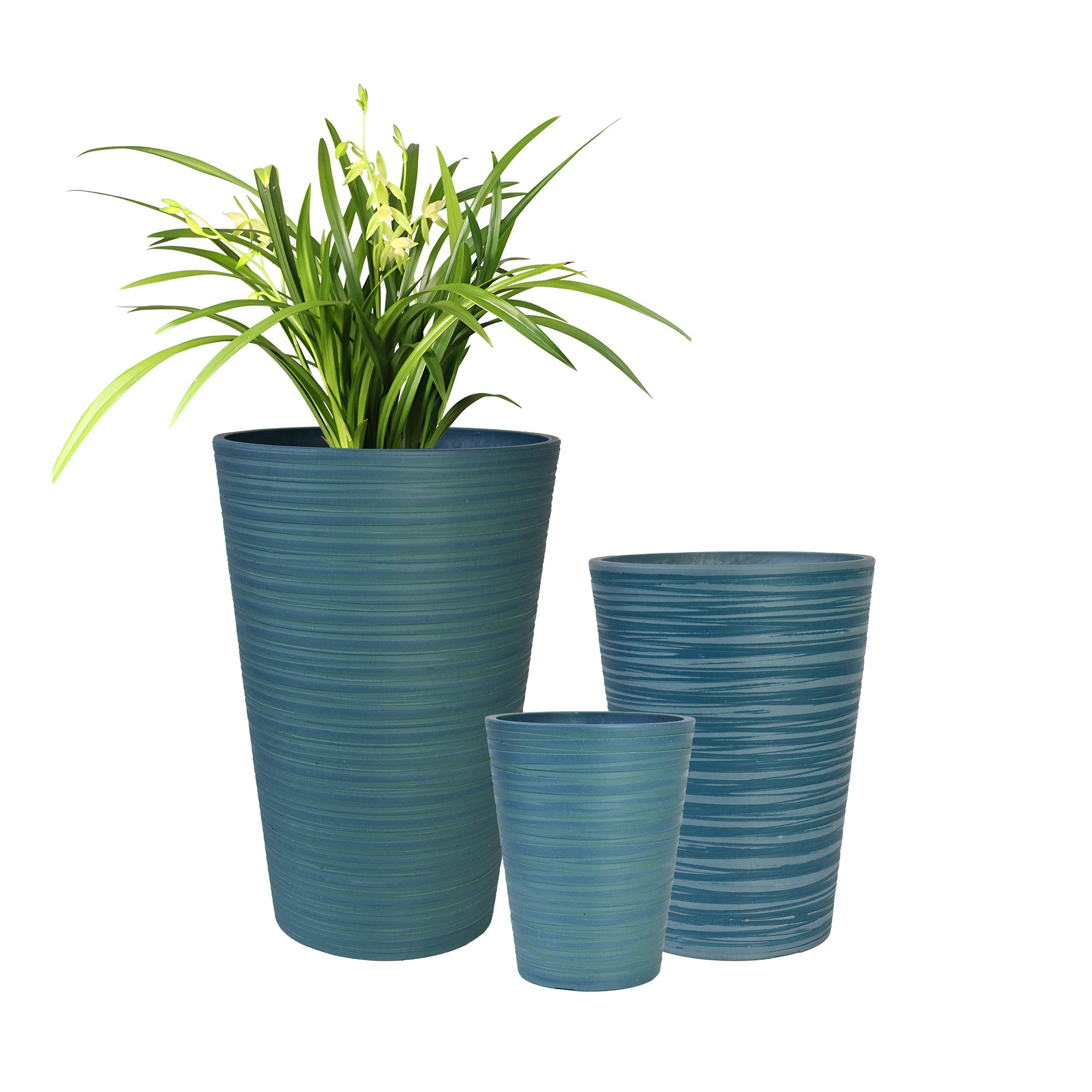When Selecting Large Outdoor Flower Pots, What Materials Should I Prioritize for Durability and Weather Resistance?
Large outdoor flower pots are a significant investment and play a crucial role in showcasing your plants and enhancing your outdoor living space. To ensure they withstand the rigors of various weather conditions and last for many seasons, prioritizing durable and weather-resistant materials is key. Here’s a breakdown of the top material choices for large outdoor planters, focusing on their resilience:
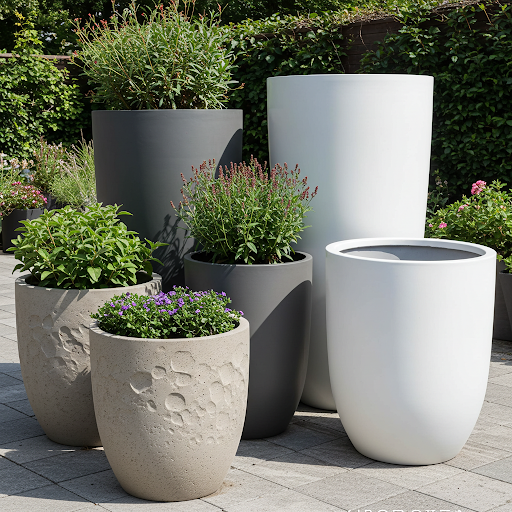
Top Material Choices for Durable and Weather-Resistant Large Outdoor Flower Pots:
- Concrete: Concrete is arguably one of the most durable and weather-resistant materials for large outdoor planters.
- Pros: Extremely sturdy and stable, resistant to strong winds, frost, and UV rays. Concrete planters can last for decades and develop a beautiful patina over time. Their weight also makes them less likely to be knocked over.
- Cons: Can be very heavy, making them difficult to move once filled. May crack in extreme freeze-thaw cycles if not properly sealed or if the concrete mix is of poor quality.
- Stone and Cast Stone: Similar to concrete in terms of durability and weather resistance, stone and cast stone planters often offer more intricate designs and a natural, elegant aesthetic.
- Pros: Highly durable, resistant to weather elements, and adds a touch of sophistication to outdoor spaces.
- Cons: Can be very expensive and extremely heavy, posing challenges for placement and relocation.
- Metal (Aluminum, Stainless Steel, Powder-Coated Steel): Metal planters offer a sleek, modern look and excellent durability when the right type is chosen.
- Pros: Lightweight yet strong (especially aluminum and stainless steel), resistant to rust and corrosion (especially aluminum and stainless steel). Powder-coated steel offers good protection against the elements. Can withstand extreme temperatures.
- Cons: Steel can rust if the protective coating is damaged. Dark metal can heat up significantly in direct sunlight, potentially affecting root health. Aluminum and stainless steel can be more expensive.
- Fiberglass: A popular choice for its combination of durability and relatively light weight.
- Pros: Very durable, resistant to cracking, chipping, and fading from UV exposure. Can withstand both hot and freezing temperatures. Lighter than concrete or stone, making them easier to move. Can be molded to mimic the look of other materials like terracotta or stone.
- Cons: Can be more expensive than some other options. Lighter weight might make very tall planters susceptible to strong winds if not properly weighted at the bottom.
- High-Quality Plastics and Resins: Modern plastics and resin blends have come a long way in terms of durability and weather resistance.
- Pros: Lightweight, often UV-resistant and frost-proof. Can be molded into various shapes and styles. Generally more affordable than concrete, stone, or metal. Easy to clean.
- Cons: Quality can vary significantly. Lower-grade plastics may become brittle or fade over time. May not have the same high-end aesthetic as other materials.
- Terracotta (with Caveats): While aesthetically pleasing and a classic choice, terracotta has some limitations in terms of weather resistance, especially in regions with freezing temperatures.
- Pros: Porous, which allows for good air circulation to the roots. Relatively affordable. Develops a beautiful patina over time.
- Cons: Can crack or break in freezing temperatures as water trapped in the clay expands. More susceptible to chipping and damage than other materials. May require more frequent watering due to its porous nature.
Materials to Potentially Avoid for Long-Term Durability in Large Outdoor Planters:
- Untreated Wood: While wood can look beautiful initially, it is susceptible to rot, decay, and insect infestation when exposed to the elements long-term unless properly treated and maintained. Even treated wood may not last as long as other materials.

Factors to Consider When Choosing Material:
- Climate: If you live in an area with harsh winters and freezing temperatures, prioritize frost-proof materials like concrete, stone, metal, fiberglass, or high-quality plastics. For hot, sunny climates, consider materials that won’t overheat easily or are UV-resistant.
- Weight: Consider the weight of the empty planter and how it will be to move once filled with soil and plants. If you plan to rearrange your planters frequently, lighter materials like fiberglass or plastic might be preferable.
- Aesthetics: Choose a material that complements your outdoor décor and the style of your home.
- Budget: Prices can vary significantly between different materials. Consider your budget and the long-term value and durability of the planter.
- Maintenance: Some materials, like wood, may require more regular maintenance (e.g., resealing) than others.
By carefully considering these material options and your specific needs and climate, you can select large outdoor flower pots that will not only enhance your outdoor space but also withstand the test of time and weather.
K2-11T
By greenship|2024-08-13T04:21:25+00:00August 13, 2024|Categories: Hand-carving Series|
KC3-09k
By greenship|2024-08-16T06:24:36+00:00August 16, 2024|Categories: Hand-carving Series|
KC2-21G
By greenship|2024-08-13T06:19:08+00:00August 13, 2024|Categories: Hand-carving Series|
KC2-GS
By greenship|2024-08-16T06:30:21+00:00August 16, 2024|Categories: Hand-carving Series|
KC3-14A
By greenship|2024-08-16T06:26:30+00:00August 16, 2024|Categories: Hand-carving Series|
Planter 6 in W / 8 in W / 12 in W Indoor or Outdoor Plants, Modern Decorative Plant Pots with Drainage Hole, Decorative Flower Pots
By greenship-seo|2025-02-06T13:43:53+00:00January 16, 2025|Categories: Hand-carving Series|Tags: Decorative Flower Pots|

